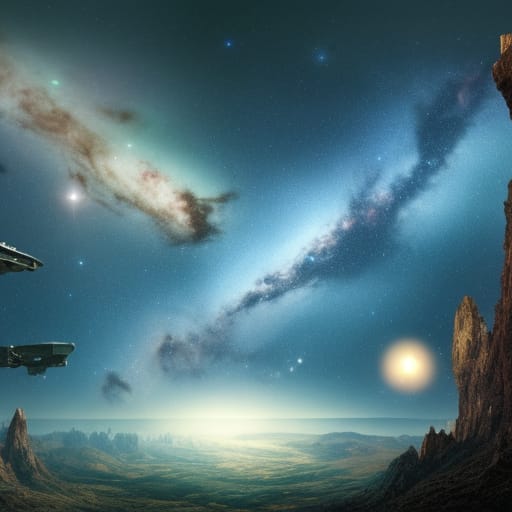Space: Overview

Space, often referred to as outer space, is the vast, seemingly infinite expanse that exists beyond Earth's atmosphere. It is the domain in which celestial bodies, such as stars, planets, and galaxies, reside. Here are the important aspects of space:
Vacuum: Space is an almost perfect vacuum, with extremely low pressure and a negligible amount of particles. Despite this, space is not entirely empty, as it contains trace amounts of gas, dust, and cosmic rays.
Temperature: The temperature in space varies depending on the location and proximity to sources of radiation like stars. In the absence of direct sunlight, the temperature can drop to about -270°C (-454°F), just a few degrees above absolute zero. In direct sunlight, temperatures can rise to over 120°C (248°F).
Microgravity: Objects in space experience microgravity or weightlessness due to the constant free-fall towards the celestial body they orbit. This unique environment has significant effects on human physiology and the behavior of fluids, materials, and other processes, which has led to numerous scientific experiments being conducted aboard space stations.
Cosmic radiation: Space is filled with various forms of radiation, such as cosmic rays, solar wind, and electromagnetic radiation emitted by celestial objects. This radiation can pose a risk to spacecraft and astronauts, making radiation shielding and monitoring essential for space missions.
Earth's atmosphere: Earth's atmosphere acts as a protective barrier against harmful solar radiation, space debris, and meteoroids. The atmosphere gradually thins out as altitude increases, with no distinct boundary between it and space. However, the Kármán line, located at an altitude of 100 kilometers (62 miles) above sea level, is often used as a conventional boundary between Earth's atmosphere and space.
The Solar System: Our solar system comprises the Sun, eight planets, five recognized dwarf planets (including Pluto), and numerous moons, asteroids, and comets. It extends over vast distances, with the outermost reaches of the solar system being home to the Oort Cloud, a region containing billions of icy bodies.
Galaxies: Space contains billions of galaxies, each consisting of billions to trillions of stars, along with gas, dust, and dark matter. Our Milky Way galaxy is just one among countless others, with the nearest major galaxy, Andromeda, located about 2.5 million light-years away.
The universe: The universe is the entirety of space and everything it contains, including all galaxies, stars, planets, and other celestial objects. The universe began with the Big Bang around 13.8 billion years ago and has been expanding ever since.
The expansion of the universe: The universe is constantly expanding, with galaxies moving away from each other as space itself expands. This expansion was first observed by astronomer Edwin Hubble, leading to the development of the Big Bang theory.
Space exploration: Humanity has been exploring space for decades, sending astronauts, probes, and telescopes beyond Earth's atmosphere to study celestial objects and phenomena. Space exploration has led to numerous scientific discoveries and technological advancements, such as the development of satellite technology for communication, navigation, and Earth observation, as well as deepening our understanding of the origins and evolution of the universe.